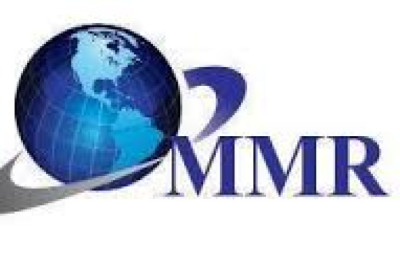views
In today's fast-paced digital world, managing data efficiently is crucial. Traditional local storage solutions often fall short, especially for businesses and tech-savvy individuals dealing with large volumes of data. If you're tired of juggling multiple external hard drives or struggling with limited storage on your devices, it's time to consider a smarter solution. Network Attached Storage (NAS) offers a seamless transition from local storage to a more versatile, efficient, and secure way to manage your data. This blog will guide you through everything you need to know about NAS solutions and how they can revolutionize your data management.
Introduction to NAS Storage
Let's understand what is NAS? Network Attached Storage, or NAS, is a dedicated file storage system that allows multiple users and devices to access and share data over a network. Unlike traditional local storage solutions that are tied to specific devices, NAS provides centralized storage that can be accessed remotely. This makes it an ideal solution for both home and business environments where data accessibility and security are paramount.
In this post, we will explore the benefits of transitioning to NAS storage, how to set up and configure a NAS system, and practical tips for maximizing its potential. Whether you're a small business owner looking to streamline your data management or a tech enthusiast eager to upgrade your home network, this guide has you covered.
Why Transition to NAS Storage?
Enhanced Accessibility
One of the most compelling reasons to switch to NAS storage is the enhanced accessibility it offers. With NAS, your data is no longer confined to a single device. Instead, it can be accessed from any device connected to your network. This means you can retrieve files from your laptop, smartphone, or tablet, no matter where you are. Imagine working on a crucial project from your office and accessing the same files at home without needing to transfer them manually.
Improved Data Security
Data security is a significant concern for anyone managing sensitive information. NAS solutions come equipped with advanced security features such as encryption, user authentication, and regular backups. These features ensure that your data is protected from unauthorized access and potential data loss. Additionally, many NAS devices offer RAID configurations that provide redundancy, further safeguarding your data against hardware failures.
Scalability and Flexibility
Unlike traditional local storage, which often requires replacing old drives with larger ones, NAS offers scalability. You can easily expand your storage capacity by adding additional drives to your NAS device. This flexibility makes NAS an excellent long-term investment for growing businesses and individuals with increasing storage needs.
Key Features of NAS Solutions
Centralized Data Management
With NAS, all your data is stored in a central location, making it easier to manage and organize. This centralized approach simplifies tasks such as file sharing, backups, and updates. For businesses, this means employees can collaborate more efficiently, accessing and sharing files from a single, unified storage system.
User-Friendly Interface
Modern NAS devices come with intuitive web-based interfaces that make setup and management straightforward, even for non-tech-savvy users. These interfaces often include features like drag-and-drop file management, automated backup, and user-friendly dashboards that provide insights into storage usage and performance.
Versatile Use Cases
NAS solutions are incredibly versatile and can be used for various applications beyond simple file storage. For example, NAS devices can function as media servers, allowing you to stream movies, music, and photos to different devices within your network. They can also serve as surveillance systems, hosting and managing IP cameras for home or business security.
How to Choose the Right NAS Solution?
Assess Your Storage Needs
Before investing in a NAS solution, it's essential to assess your storage needs. Consider factors such as the volume of data you need to store, the number of users who will access the NAS, and the types of files you'll be storing. This assessment will help you choose a NAS device with the appropriate storage capacity and features.
Evaluate Compatibility
Ensure that the NAS device you choose is compatible with your existing network infrastructure and devices. Most modern NAS solutions support a wide range of operating systems and devices, but it's always a good idea to double-check compatibility before making a purchase.
Consider Future Growth
When selecting a NAS solution, consider your future storage needs. Choosing a NAS device with expandable storage options will save you time and money in the long run. Look for devices that allow you to add additional drives or upgrade to larger capacities as your storage requirements grow.
Setting Up Your NAS System
Initial Setup
Setting up a NAS system is typically straightforward, thanks to the user-friendly interfaces provided by most manufacturers. Begin by connecting the NAS device to your network using an Ethernet cable. Once connected, power on the device and follow the manufacturer's setup wizard to configure basic settings such as network settings, user accounts, and storage configurations.
Configuring Storage
After the initial setup, you'll need to configure your storage options. Many NAS devices offer various RAID configurations that provide redundancy and improve performance. Choose the configuration that best suits your needs and set up your storage volumes accordingly. Ensure you allocate enough space for backups and future expansions.
Setting Up User Access
One of the advantages of NAS storage is the ability to create multiple user accounts with different access levels. Set up user accounts for each person who will access the NAS, assigning appropriate permissions based on their roles. This ensures that sensitive data remains secure while allowing easy access to shared files.
Maximizing the Potential of Your NAS
Automating Backups
Regular backups are crucial for data security, and NAS devices make this process seamless. Most NAS solutions offer automated backup options that allow you to schedule regular backups of your files and folders. Ensure you configure these settings to run at convenient times, minimizing disruptions to your workflow.
Utilizing Mobile Apps
Many NAS manufacturers offer mobile apps that allow you to access and manage your NAS from your smartphone or tablet. These apps provide convenient features such as remote file access, media streaming, and real-time notifications. Take advantage of these apps to maximize the accessibility and functionality of your NAS system.
Implementing Advanced Security Measures
While NAS devices come with built-in security features, it's essential to implement additional measures to safeguard your data. Enable two-factor authentication (2FA) for user accounts, regularly update your NAS firmware, and configure firewall settings to protect against potential threats. These steps will help ensure that your data remains secure.
Common Challenges and Solutions
Network Performance
One common challenge with NAS storage is network performance, especially when multiple users access the system simultaneously. To mitigate this issue, ensure your network infrastructure can handle the increased traffic. Consider upgrading your router, using wired connections, and optimizing your network settings for better performance.
Data Migration
Migrating data from local storage to NAS can be a time-consuming process, especially for large volumes of data. To streamline this process, use migration tools provided by the NAS manufacturer or third-party software designed for data migration. Plan the migration during off-peak hours to minimize disruptions.
Managing User Permissions
Managing user permissions can become complex as the number of users and files increases. Regularly review and update user permissions to ensure that only authorized individuals have access to sensitive data. Utilize user groups and role-based access controls to simplify permission management.
Conclusion
Transitioning from local storage to NAS solutions is a game-changer for both individuals and businesses. The enhanced accessibility, improved data security, and scalability offered by NAS make it an ideal choice for efficient data management. By understanding your storage needs, choosing the right NAS device, and implementing best practices, you can unlock the full potential of network-attached storage.
If you're ready to take your data management to the next level, now is the perfect time to explore NAS solutions. Start your transition today and experience the benefits of a smarter, more efficient way to store and manage your data.
For further resources and expert guidance on choosing and setting up your NAS system, visit our website or contact our support team. We're here to help you make the most of your data management strategy.











